How does a CAG ensure that mutual agreements are continuously monitored in the CAG and that communication and coordination are successful across organisations, research projects and busy research leaders? CAG Research in OsteoArthritis Denmark (ROAD) is composed of high-profile specialists who all contribute important knowledge as to how the CAG can lift the osteoarthritis area. To support the common ambitions, the CAG has chosen to support the collaboration with a coordinator who keeps the CAG together administratively and follows up on the agreements entered into by the CAG members.
Coordinating collaboration across physicians and researchers from hospitals and universities typically requires a research coordinator who possesses many different competencies and who can navigate in a professional network across organisational structures and management pathways. The internal coordination of a CAG is no exception. Here, a common direction must be found between different research approaches in a CAG group whose members primarily consist of managers and on a daily basis work in different organisations.
Which Areas Do You Handle as a CAG Coordinator?
CAG coordinator Louise Elberg Pedersen has been with CAG ROAD from the very beginning. That gives her knowledge of all CAG members and insight into the CAG’s professional field of osteoarthritis, also known as degenerative joint disease. In CAG ROAD, she handles, among other things, communication, meeting planning, funding, finances and progress and strategy in collaboration with the CAG management. She also acts as facilitator for the CAG chairmanship and the steering committee.
‘I am in contact with many different tasks. I also make certain that we meet in the CAG group and that we follow up on matters that we agree on. My role during the application process was to put the intentions of the chairmanship down in writing and to coordinate the many inputs for the application. The application was sent back and forth between all the steering committee members, so we could be sure that everyone was included in the application. It was an educative and exciting process, but also, it has had the advantage that I got to know the steering committee members from the start and vice versa’.
How Do You Keep the CAG Together?
As a coordinator, it is obvious to Louise that she works with professionals who are particularly driven by how they can lift the area they work with.
‘I can feel that the CAG is given priority even though it is an additional task that is placed on top of their other work. For the CAG members, it is about meeting people who are just as passionate about the osteoarthritis area as they themselves and about the ways in which they can jointly lift their research area to a new level. But it is also about having their own ideas challenged. That is why the group is composed precisely on the basis of their differences.
The unique thing about the CAG constellation is that you discover new approaches in the field you are dealing with. Some use a very clinical approach, others are rooted in basic research, while still others use a radiological approach. The entire patient course is represented – also the part that lies before our first meeting with the patient. That provides everyone in the CAG with insight into the different parts and areas of osteoarthritis. The increased complexity that it brings along is a catalyst for more opportunities and thus the driving force that can lift the research area to a higher level. Together, however, we must always keep the CAG’s overall goal in mind. Both in the CAG management and in the coordination across the CAG, it is important that all interests are safeguarded’.
How Do You Establish a Chairmanship and Find the Right Key Members?
‘When we started the application process to become a CAG, there were naturally several relevant prospects in our network who might participate with the different approaches. In addition, it has also been necessary to use others’ networks to secure a variety of approaches in the field of osteoarthritis. If you only cooperate with those you already know, it can remain a closed circle of knowledge. In addition to the high professional level required from the CAG members on paper, it was crucial that the participants were people who were good at collaborating.
In CAG ROAD, the idea to apply to become a CAG first came up in the clinical environment at Hvidovre Hospital. For us, it was a challenge to find the basic cooperation from the university side, as there is not much university research going on in the field of osteoarthritis. But it also made it clear to us that there was a need for cross-disciplinary cooperation – which we now have with CAG ROAD’, concludes Louise.
About CAG ROAD
Clinical Academic Group – Research in OsteoArthritis Denmark (ROAD), Greater Copenhagen Health Science Partners
- CAG ROAD blev udnævnt i juni 2018.
- CAG ROAD formandskabet består af Anders Troelsen og Stine Jacobsen.
- CAG ROAD består ud over formandskabet af 10 key-members, der udgør CAGens styregruppe. De mødes ca. fem gange om året.
About Louise Elberg Pedersen
Research Administrator, Clinical Orthopedic Research Hvidovre, Orthopedic Surgery Department, Hvidovre Hospital, Copenhagen University Hospital.
Louise has a BA in Nutrition and Health and a Master in Educational Sociology. Louise was already working as a research administrator at Hvidovre Hospital when CAG ROAD applied to be appointed CAG in GCHSP. Prior to that she came from a position in Research and Innovation in the Capital Region of Denmark. In addition, she is a member of the National Association of Research Administrators (DARMA).
CAG coordinators in GCHSP
https://gchsp.dk/en/gchsp-organisation/








